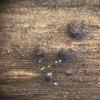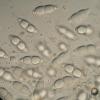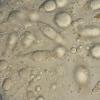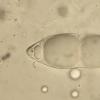
30-12-2025 16:44
Pascal DucosBonjour,Une anamorphe rose stipitée, très nombre

30-12-2025 17:14
 Bernard CLESSE
Bernard CLESSE
Bonjour à toutes et tous,Pourriez-vous aider Albe

29-12-2025 10:15
Hulda Caroline HolteHello, I found and collected this propoloid ascom

30-12-2025 09:04
Hello.A Pyrenomycete sprouting sparsely but very d

29-12-2025 17:44
Isabelle CharissouBonjour,J'aimerais savoir si d'autres personnes au

12-11-2021 00:03
Lepista ZacariasHi everybody,A week ago in my fiels trip I noticed

29-12-2025 17:12
 Bernard CLESSE
Bernard CLESSE
Bonjour à toutes et tous,Pourriez-vous m'aider à
Bitunicate? on ? Lysimachia, southern Sweden, aug 2017
Thomas Læssøe,
23-08-2017 13:59
Somebody may know this one based on spores alone?
cheers
Sven-Åke Hansson and Thomas Læssøe
Jacques Fournier,
23-08-2017 16:22

Re : Bitunicate? on ? Lysimachia, southern Sweden, aug 2017
Hi Sven-Åke and Thomas,
in absence of further data my answer can only be tentative but I would suggest to look into Halosphaeriaceae where this kind of spore is not uncommon. Asci in that genus are rapidly evanescent but they are fairly typical if you can observe a barely mature ascoma. The family is typically marine or in freshwater, can it be the case here?
The spores of Halosphaeriaceae often have conspicuous appendages, which is not the case here but they seem to be surrounded by a wide sheath, am I wrong?
Good luck,
Jacques
in absence of further data my answer can only be tentative but I would suggest to look into Halosphaeriaceae where this kind of spore is not uncommon. Asci in that genus are rapidly evanescent but they are fairly typical if you can observe a barely mature ascoma. The family is typically marine or in freshwater, can it be the case here?
The spores of Halosphaeriaceae often have conspicuous appendages, which is not the case here but they seem to be surrounded by a wide sheath, am I wrong?
Good luck,
Jacques
Thomas Læssøe,
24-08-2017 11:00
Re : Bitunicate? on ? Lysimachia, southern Sweden, aug 2017
you are for sure right about the gel sheath and your suggestion also explains the missing centrum structures, asci etc. Lysimachia normally grow in wet freshwater sites, so I guess your suggestion is worth exploring.
Thanks
Thanks






